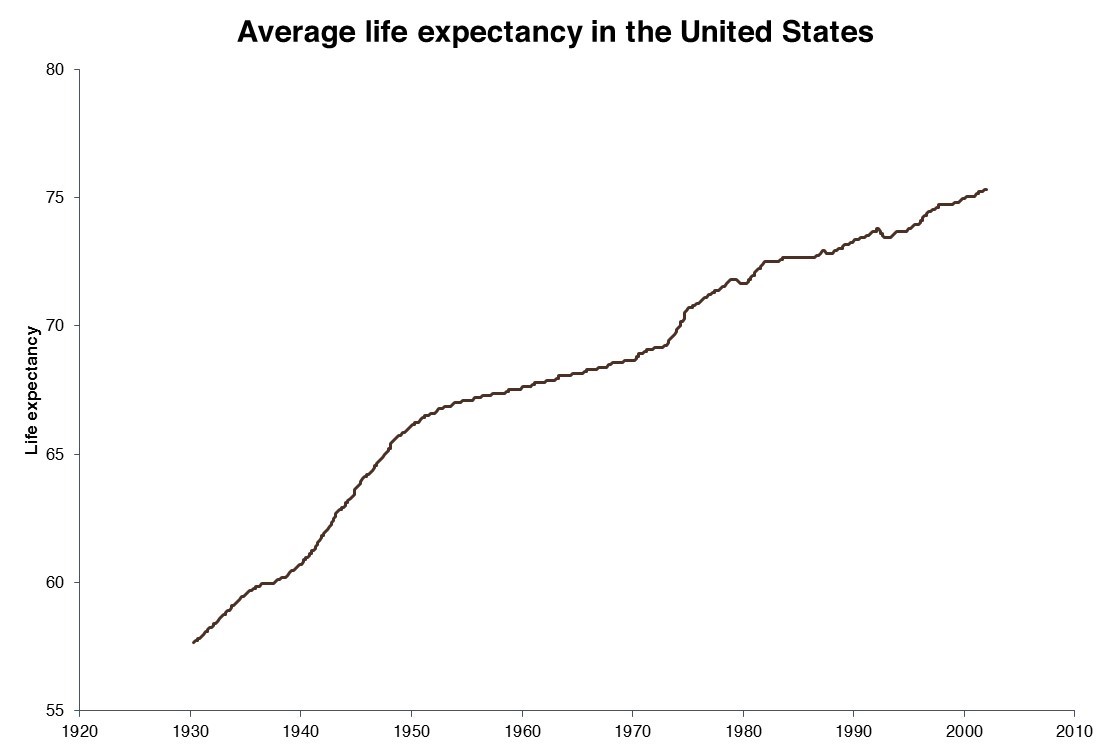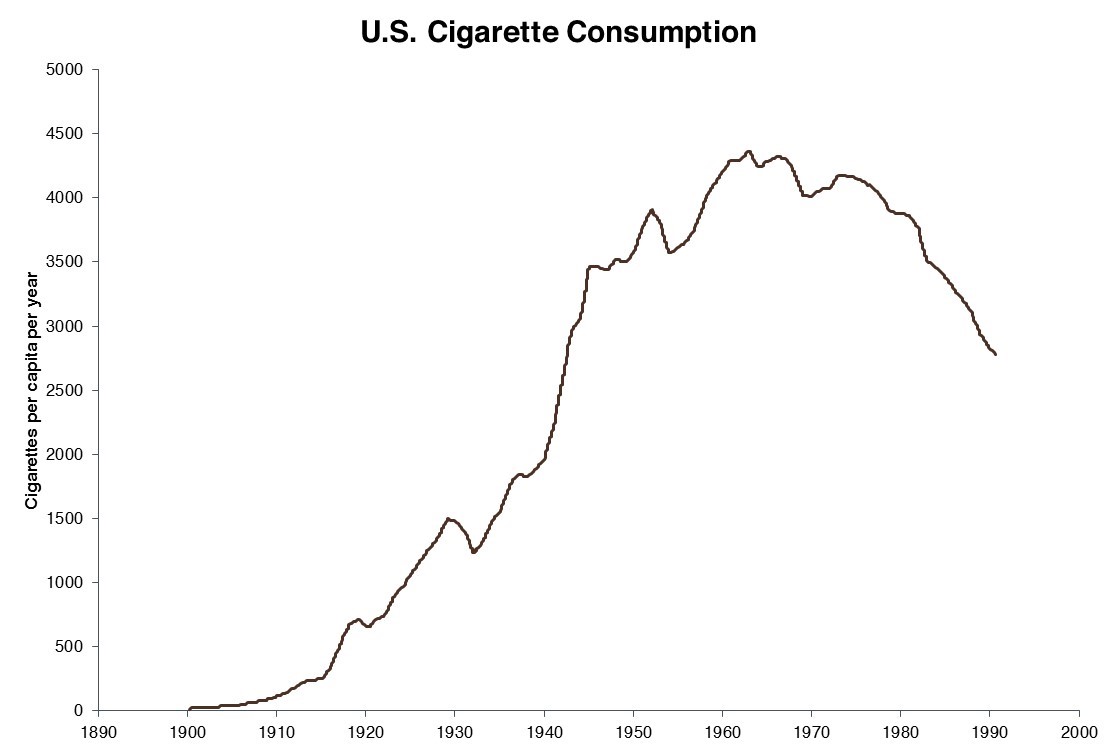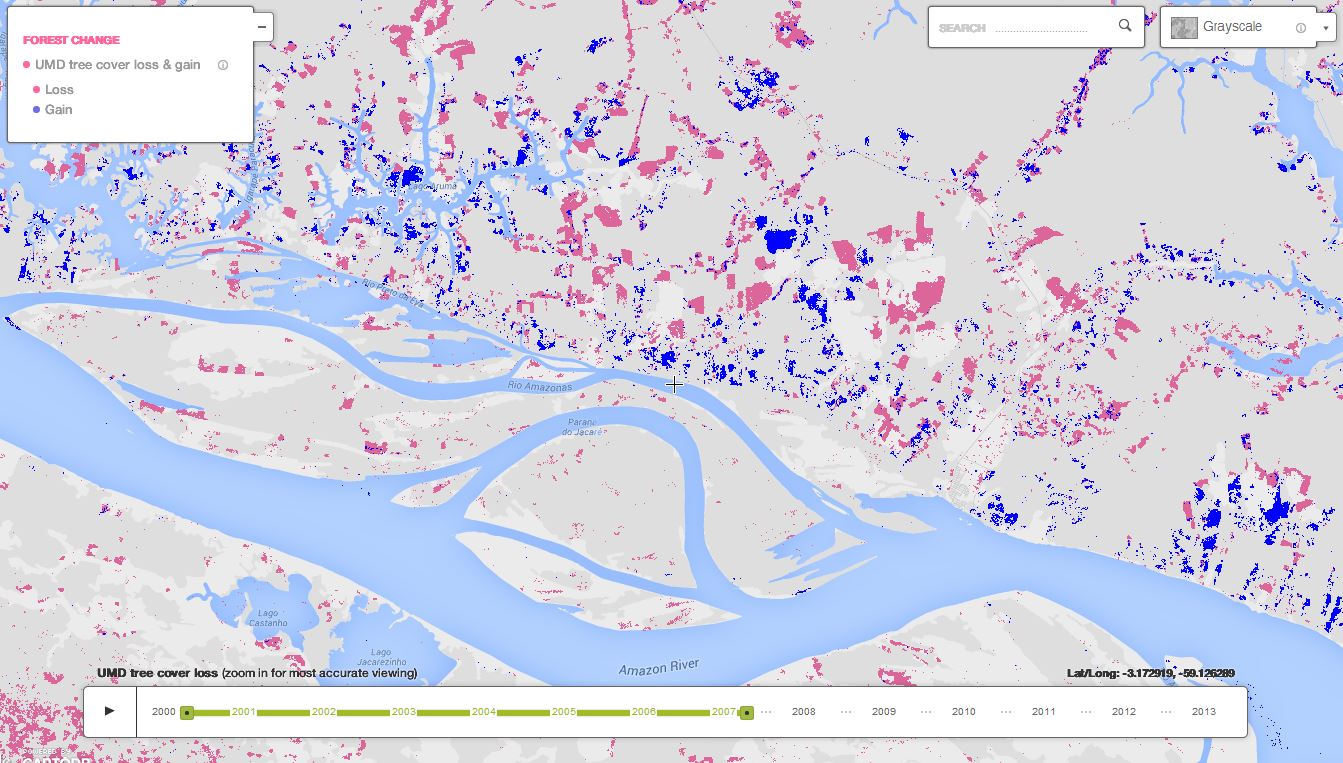Blog
It's a jungle out there: iLUC, the Amazon and how to read a map
A recent ‘Biofuels Digest’ article presented a new deforestation monitoring tool from Global Forest Watch. The tool, which “unites satellite technology, open data, and crowdsourcing to guarantee access to timely and reliable information about forests”, identifies areas in which deforestation is occurring. The tool shows changes in forestation between 2000 and 2013, and confirms the well-known result that deforestation in Brazil’s Amazon rainforest, a decades-old environmental disaster, is slowing down. This reduction in rates of deforestation is generally attributed to improved policies and governance introduced since by the ruling ‘Workers’ Party’, which came to power in 2002. Former President Lula da Silva pledged in 2005 to reduce deforestation by 80% by 2020, and reported deforestation rates have indeed fallen dramatically following a peak in 2004.
This is certainly not a new finding – the falling rate of Amazon deforestation has been widely reported in recent years, and the data from the new tool simply serve to reinforce a result that was already widely known. However, the Biofuels Digest has used the new data not as a basis to give credit for Brazil’s improved enforcement measures, but to claim that “iLUC theory… may be nullified by the observational data.” Indirect land use change, often abbreviated as iLUC, refers to the increase in agricultural area, and associated carbon dioxide emissions, predicted to happen with increased demand of agricultural products. While iLUC can happen anywhere, deforestation in tropical rain forests is of particular concern, because these ecosystems store large reserves of carbon in biomass and soils (not to mention biodiversity) and hence converting them for farming would be a major source of carbon emissions. The premise put forward by the Digest (incidentally, like the result itself this argument is already several years old, e.g. this post from 2010) is that if the rate of deforestation in the Amazon is falling, then surely biofuels cannot have anything to do with deforestation. So, is the Digest right on this, or are things a little more complicated than it gives them credit for?
The oft-cited example referred to in the Digest is that of pasture land being converted to cropland in Brazil, and the subsequent conversion of land in the Amazon rainforest to new pasture. This has been suggested as a particularly strong risk in the case of use of soy oil for biodiesel. The U.S. produces a large proportion of the world’s soybeans, which contain protein, carbohydrates, and oil. Take a look at the ingredients list of a bottle of “vegetable oil” or “salad oil” at your local grocery store and there’s a good chance it’s actually soybean oil. But now about one-third of U.S. soybean oil is used to produce biodiesel, a diversion driven by the Renewable Fuel Standard. Brazil is a big livestock producer, and if pasture land gets converted to grow more crops, those cows have to eat something. In that case, the reduction in pastureland for soy could result in livestock farmers cutting down the Amazon rainforest for more land. This is one way that U.S. soybean biodiesel use could drive more Amazon deforestation.
It’s great news that Amazonian deforestation is slowing, but unfortunately this doesn’t mean iLUC isn’t happening. There are two fundamental problems in the Digest article – the most important one is conceptual, and the other is about how to read data. To deal with the conceptual problem first, what the Digest has failed to understand here is the concept of the baseline. Agricultural demand is not the only driver of deforestation in the world, and biofuels are not by any means the only driver of agricultural demand. The iLUC models don’t predict total rates of land use change that will happen in the world, as this wouldn’t tell you anything about whether biofuel demand was or wasn’t responsible. What they do is predict how much more or less land use change would occur with biofuels compared to a world without them. The baseline is a world without biofuels, but with all the other stuff that affects deforestation rates. The data does indeed show falling Amazon deforestation as biofuel use has increased, but what would have happened to the Amazon if we lived in a world with no biofuels? Deforestation would still have slowed due improved policies and law enforcement but there probably would have been even less deforestation had biofuel policies not been in effect. To give an analogy from healthcare, U.S. life expectancy rose pretty consistently from 1920 to 1970, a period during which cigarette consumption also dramatically increased. By the logic of the Digest, you could conclude from this that cigarettes have no impact on life expectancy. Of course, the real explanation is that just like land use change mortality is driven by many factors, and cigarette smoking on its own didn’t reverse gains from other medical advances. Cigarettes still cause cancer, and biofuels still cause iLUC. It’s fair to argue over just how much iLUC occurs, or to query any given modeling effort, but it’s an oversimplification to claim that a single data point like Amazon deforestation refutes the theory. In short, we can’t give biofuels a free pass just because Brazil tightened up its act on forest governance.
To get back briefly to soy oil displacement, while some of the increased demand for soybean oil may lead to farmers planting more soy, some of the demand is also likely to be met by other types of oils. If your generic “salad oil” from the grocery store were changed from soy oil to canola oil, you probably wouldn’t notice a thing. And some of this substitution probably is happening. We’ve showed in the past that as more soybean oil has been used for biodiesel, the U.S. has been importing more palm oil. And in fact, the same Global Forest Watch data cited by the Digest shows accelerating deforestation in Indonesia from development of oil palm plantations. Again, a simple correlation doesn’t prove that that is a causative link, but this type of data is important for iLUC modeling. iLUC models shouldn’t assume that there is no deforestation in the Amazon, but they should take account of improved governance making deforestation less likely. Similarly, that shouldn’t assume that all palm oil causes deforestation and loss of peatland, but they should recognize that the data shows peat destruction is getting more and more likely. Dealing with these complexities is why models are necessary, and why arguments like the one in the Digest are inadequate.
To come to the second problem in the Digest article, we also note that the authors failed to read the small print on their data before they picked the deforestation maps shown.
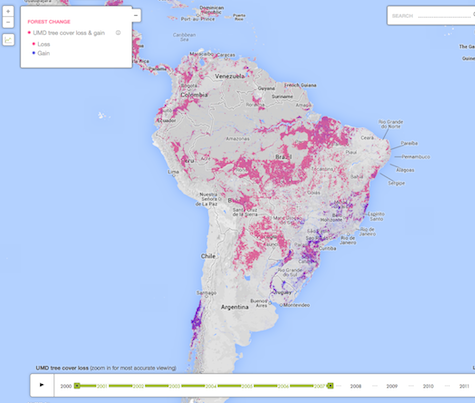
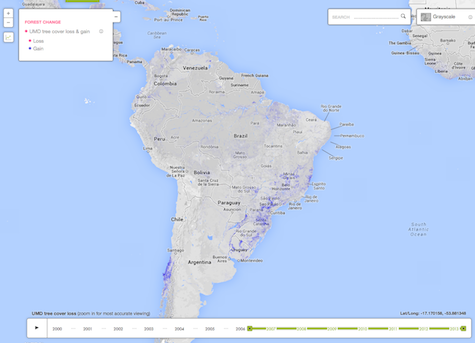
These maps seem to show that there was massive deforestation in the early part of last decade, and none in the latter part. Indeed, if you go to the Global Forest Watch tool and refine the time period while looking at the whole world, you’ll see that almost all deforestation seems to have happened in 2001, a remarkable result. If, however, you do go to the small print, you find it explained that:
When zoomed out, it appears that all tree cover loss occurs in 2001, but in reality loss happened gradually over the study period. As you zoom out, adjacent pixels representing loss—which may have occurred in different years—must be combined into a single pixel to remain visible on a larger scale. Authors of the study decided to display these “aggregate pixels” according to the year loss first occurred in any of the constituent pixels (often 2001 for low zoom levels with very large aggregate pixels). Zoom in for greater detail of when and where loss has occurred for individual 30 × 30 meter pixels.
If we look at a much higher resolution at a region in the Amazon, you’ll see that there has been substantial deforestation both before (first image below) and since (second image below) 2007, albeit that the rate is indeed slower in the later years. There’s an example below, feel free to try it for yourself on your favorite chunk of jungle. To be fair to the Digest, this way of aggregating pixels does seem to us to be a bit unhelpful – but on the other hand, anyone who knows anything about the Amazon should know that while deforestation has been slowing down, it has far from stopped, so we’re disappointed that they didn’t realize that there was a problem in what they thought they were seeing.
The bottom line is that if we look at the global picture it’s pretty clear that increased demand for vegetable oils is linked to land use change. It isn’t just the U.S. – the EU consumes a lot more biodiesel than Americans do and are responsible for much of the problem. Not all biodiesel causes iLUC: some is made from used cooking oil, which can be consumed in vehicles without indirect consequences. Cellulosic biofuels made from wastes, residues, and energy crops grown on marginal land have fewer indirect impacts than food-based biofuels and are a promising option for very low carbon fuels. If the Biofuels Digest wants us to wean ourselves off petroleum without worrying about deforestation then continuing to focus on supporting the cellulosic biofuel industry, but spending less time on ill-conceived assaults on iLUC science, is probably the way to go.

